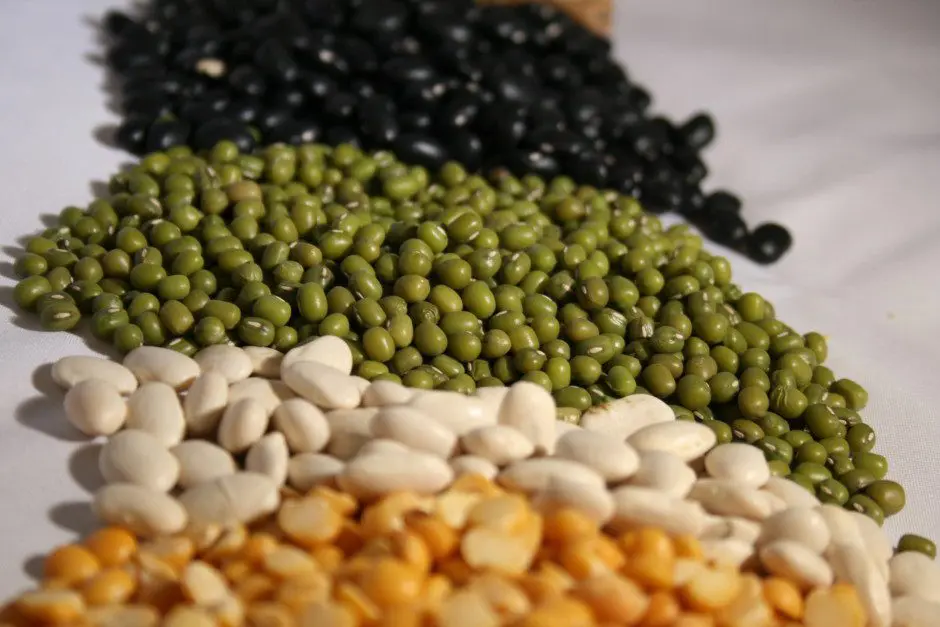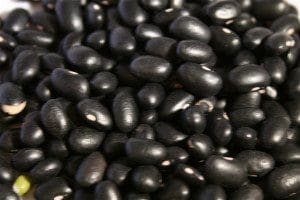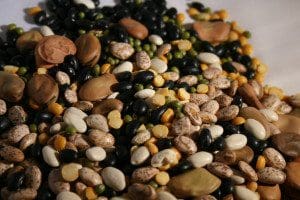“The fruit of a plant originally came from Central and South America. The word “bean” refers to the fruit, the seed and the plant that produces them. The pods of most varieties can be eaten fresh (before reaching full maturity). Once they are mature they are no longer edible; the beans are podded and the seeds, called legumes, can be used fresh or dried and cooked”
“The Visual Food Lovers Guide” Page 119
The shells of the fresh bean are typically lovely shades of light and dark green, nothing too extraordinary. The true gem is on the inside. The beans that come from fresh beans are stunning. In fact there so elegant they look like something you would string with a strand of pearls. For instance: the Fresh Turtle Beans are so beautiful they’re the perfect color of black pearl, so it’s hard to imagine that we eat them.
Aside from their looks, beans (fresh, dry or canned) are so special that they appear in both the vegetable and protein section of the food pyramid, which makes them quite unique. There’s also the super bean the Soy Bean, which is a perfect blend of all the essential amino acids making it a complete protein.
“Legumes are rich in the B vitamins and fiber. They are a good source of protein, iron, and zinc and are naturally low in fat and cholesterol free.”
Personal Nutrition 6th Edition pg. 153
My clients seeking nutritional advice range from the very wealthy to the very poor and I suggest that everyone incorporates more beans and legumes into their diet for the reasonable prices, the great health benefits and the convenience of cooking and storing them regardless your financial background. When you cook beans they absorb other flavors and are extremely filling. There are so many different varieties of beans that they can be paired with almost anything and served as the main course, salad or side.
As Americans we tend to eat higher fat proteins like beef and pork and tend to omit things like beans and other lower fat proteins. In a 2000-calorie diet we should be consuming 3 cups of beans in a week or ½ cup each day. In a ½ cup of beans there is about 8 grams of protein, which is less than in animal proteins, but it is still a good option.
Paired with other lower-fat proteins you can easily achieve your daily-recommended intake. It’s very typical in today’s world for people to eat more protein than is recommended in a daily diet.
Whether you’re in a restaurant or in your own home there’s always a way to incorporate beans into your diet. If not for the delicate and delicious flavor than for the added health benefits that comes with adding beans and legumes to your diet.
Dry beans and peas:
Black beans are also known as the turtle bean. This bean is black and shiny when dry. A great option instead of the typical pinto bean in Mexican dishes. Great in tacos instead of ground beef or turkey.
Black-eyed peas – the traditional good luck New Year’s Day bean. Creamy white with a black dot in the bellybutton (the indention on the edge) of the bean. Gently cook them because they can easily over cook and become mushy. Tastes great cooked with pancetta, carrots, celery, onion and bay leaf.
Fava beans – a bean that is worth the extra effort. It’s in season in the summer months. It has to be shucked twice before you can eat it. The bean is light green in color and delicious with good olive oil and feta cheese.
Cranberry beans or borlotti beans – The cranberry bean or borlotti bean is very small and has beautiful red stripes. It is delicious in stews and interchangeable with most white beans.
Red kidney beans – The kidney bean slightly resembles the kidney and especially with its dark red color. The bean is large and meaty and is great in chilies.
Cannellini beans – A small white bean and slightly similar to the shape of the kidney bean. Delicious in white bean salads with artichokes and lemon juice.
Butter beans or lima beans (mature) – This bean comes in both light green and cream. You can try mashing it with roasted garlic and substitute it for mashed potatoes.
Navy beans – The smallest of the white beans. Also known as the white pea bean interchangeable with all other white beans.
Soy beans – The Soy Bean is the super bean, which is a perfect blend of all the essential amino acids making it a complete protein.
Yellow split peas – Most commonly known in green. The split yellow pea is similar to the green split pea. Split peas are used in soups and goes well with chicken.
Bean Cooking Tips
- Soak dried beans for at least 8 hours before cooking.
- To reduce gas from the beans throw out the soaking water and add new water. (Beans do release some of its nutrients into the water so, to retain those nutrients, keep the soaking water and prepare for a gassy evening.)
- Add acids and salt at the end of the cooking process to prevent the beans from becoming too firm
- When cooking green beans add salt to the water before cooking to enhance the green color.


